
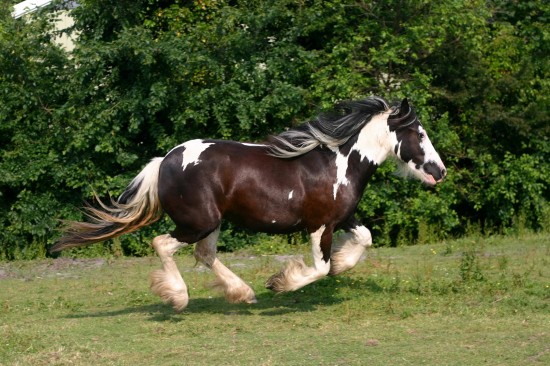
You may not know what a Gypsy Vanner is, but you will have seen plenty of them in the fields of the UK and Ireland. The breed was developed across the country by Gypsy families, and is easily recognisable as the hairy black and white ponies and horses seen in many stables. Only recently did the breed get discovered and named the Gypsy Vanner.
This breed may have only found its name in 1996, but has existed in the UK for decades. In the 16th Century Romanichal Gypsies moved to the UK. Moving around the countryside on foot, it wasn’t until the 1850s that they started to use gypsy horses to pull their homes – caravans called vardoes. These were large, carved homes commonly associated with tinkers. These caravans used to travel across the country, living on common land and country verges. With the horse pulling their ornate vardo, they needed to be both strong, patient and unflappable. They also became one of the family, safe around children and well cared for literally carrying a family on their back.
It wasn’t until after World War II that the Romanichal Gypsies decided to breed their own horses, previously using mules or cast offs from local horse sales. Families started to use coloured horses that had fallen out of favour amongst British breeders, many being culled by British breed societies. Needing a strong horse, they also bought many coloured Shire horses – these animals became status symbols in the gypsy community with families showing their standing through their horses. It was in the 1950s that the focus of the breed began to form. Gypsies bred for feathering on the legs, greater bone and specific colours. They also wanted a smaller draft horse that was easier to keep. Action was also important, making the animals impressive as they flicked their feathers down the country lanes. Welsh Section D’s and Dales ponies were added making the breed smaller and more expressive in their trot.
Developed by the Gypsies in the UK, the breed lines were passed orally from family to family. It wasn’t until a chance encounter with an American couple called the Thompsons that the breed got its own name and registry. Spotting a stallion in a field, they met with many breeders across the UK even visiting the famed Appleby Fair, to discover the roots of the breed. Recording the vision of the breed and importing their own stallions to the US, the breed is now getting recognition over the world. As a result the coloured small draft ponies of the UK got their name. In the UK they are also still known as cobs, Gypsy Horses and Tinker ponies.
Different registries have variations but the essential characteristics remain the same. Their height should range between 13 hands and 16.2 hands. Feathering must be present on their legs, starting at the knee or hock and flowing down the legs over the feet. This can be straight or curled.
Although considered a small draft, they should have a straight profile, more refined than a Shire and preferably without a roman nose. To help them fulfil their job as harness horses, they need to have strong shoulders, short well-muscled backs and powerful hindquarters. Their legs must also have a lot of bone on them, with strong hooves that are round with wide heels. Their manes and tails must be kept natural, so can be very long.
Although they are most commonly seen in piebald and skewbald, the Vanner can come in any colour. Their gaits should be powerful and expressive. In trot they will have a high knee action. This draws attention to their feathered legs.
Bred to be part of the family, the breed is very kind and loyal to its owner. The Shire roots make them incredibly easy to manage, and means they have a strong work ethic. They like to be sociable, living with other horses easily. They are easy to train and very courageous.
The joy of living in the UK is that you have probably already seen a lot for sale not realising you are looking at a distinct breed. Now they have a name, you can look on Pets4Homes to find all Gypsy Vanner horses for sale available in your area – they will usually be advertised as coloured or Gypsy Vanner.
Not all Vanners are registered. With the breed being so new to registration, this is understandable. If you want to register your horse, get information when you buy on their sire and dam’s name. Keep any bill of sale and records the previous owner passes to you. To register you will need to provide pictures, evidence of purchase and a DNA sample. The Gypsy Vanner Horse Society in America is recording the oral histories as well as creating a DNA database to find common ancestors.
Vanners are incredibly versatile. They are very popular harness horses, pulling show carriages of all sizes. They can also turn their hand to competitive driving, where teams cover cross country courses involving gates and tight turns.
Vanners make great horses for children and adults. They will turn their hand to most events, and are very good for novice or nervous riders. Vanners can also be shown in classes run by the Coloured Horse and Pony Society (CHAPS). These are classes specifically run for all coloured horse and ponies, and have Championships at many of the large shows including the Horse of the Year Show. Vanners must be shown naturally, with their mane and tail as long as possible. This can require a lot of show preparation as there is a lot of hair to wash. Underneath the hair you will need to have a fit horse with good bone. Vanners will be entered in the Traditional section, but will compete against Native ponies, riding ponies and Warmbloods in the championships.
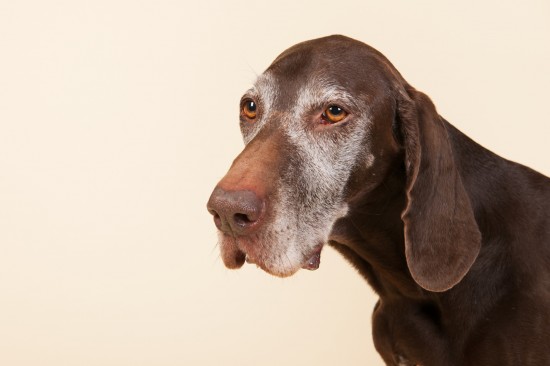 My Dog Is Passing Blood, Should I Be Worried?
My Dog Is Passing Blood, Should I Be Worried?
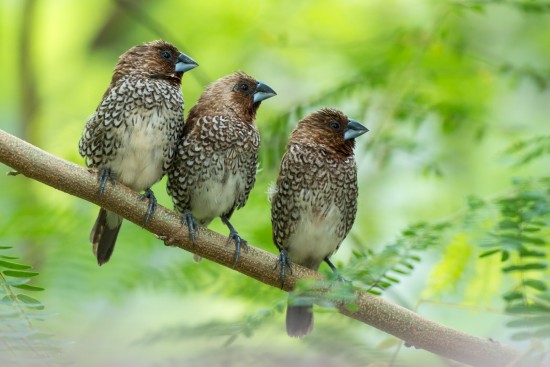 Bengalese, Mannikins And Silverbills
Bengalese, Mannikins And Silverbills
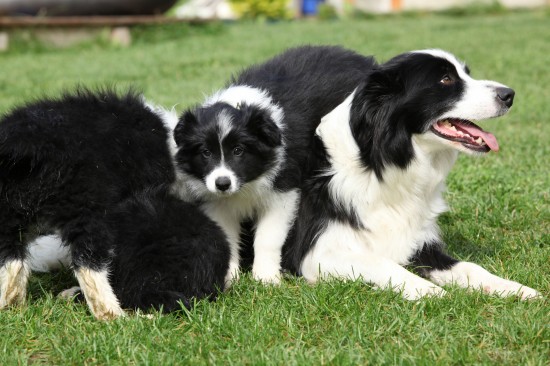 The Different Stages Of A Puppy’s Imprinting Process
The Different Stages Of A Puppy’s Imprinting Process
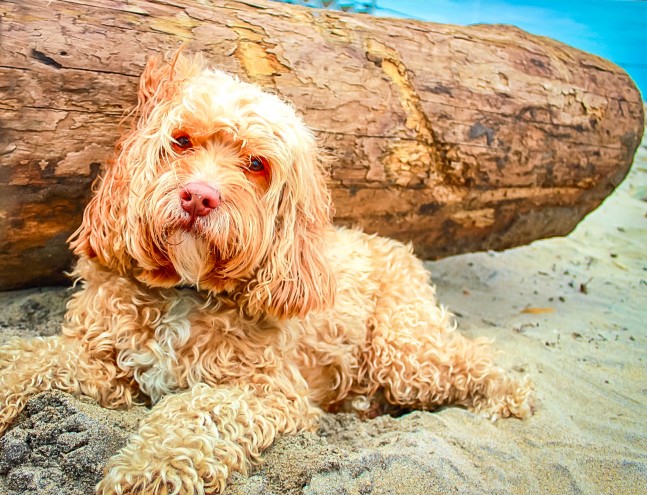 The Top 5 Most Popular Cross-breed Or Hybrid Dog Breeds In The Uk 2015
The Top 5 Most Popular Cross-breed Or Hybrid Dog Breeds In The Uk 2015
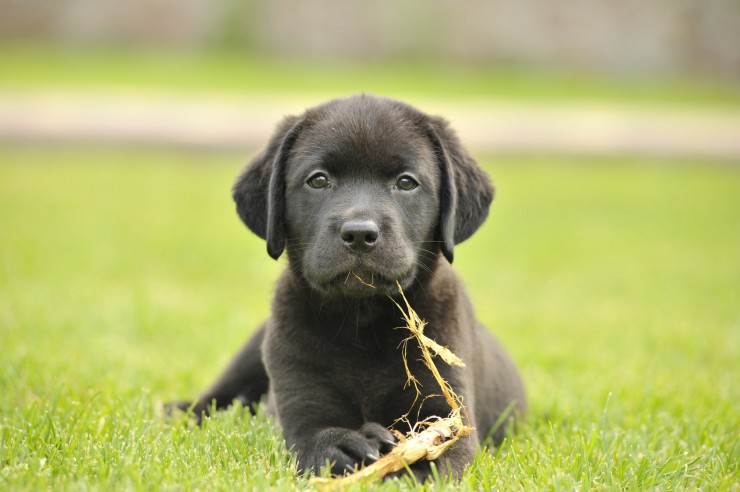 The Top Ten Most Popular Registered Dog Breeds In The Uk
The Top Ten Most Popular Registered Dog Breeds In The Uk
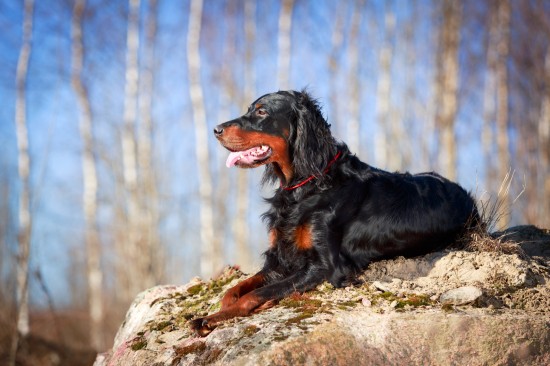 Some Frequently Asked Questions About The Gordon Setter Dog Breed
Some Frequently Asked Questions About The Gordon Setter Dog Breed
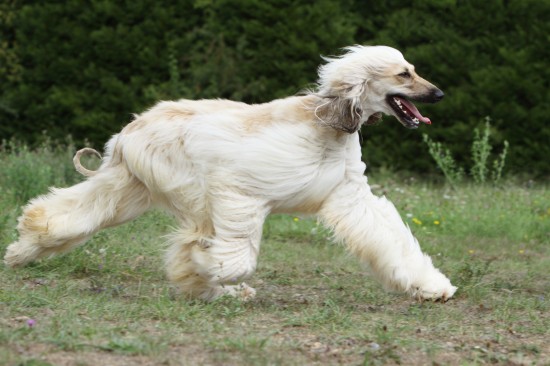 What Breeds Of Dog Have The Strongest Prey Drive, And Why?
What Breeds Of Do
What Breeds Of Dog Have The Strongest Prey Drive, And Why?
What Breeds Of Do
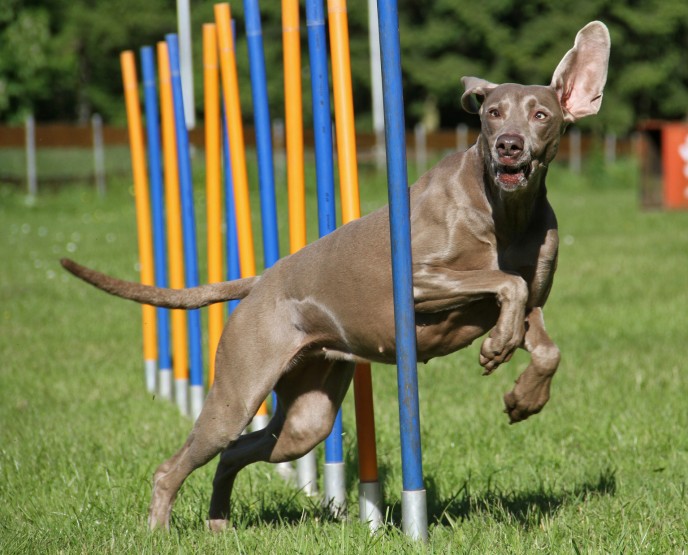 A Short Explanation Of Dog Agility Training Equipment
A Short Explanati
A Short Explanation Of Dog Agility Training Equipment
A Short Explanati
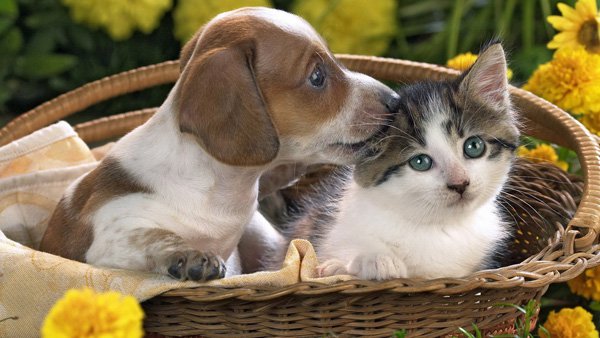 Benefits of Buying a Puppy from a Pet Store
Benefits of Buying a Puppy from a Pet Store
If
Benefits of Buying a Puppy from a Pet Store
Benefits of Buying a Puppy from a Pet Store
If
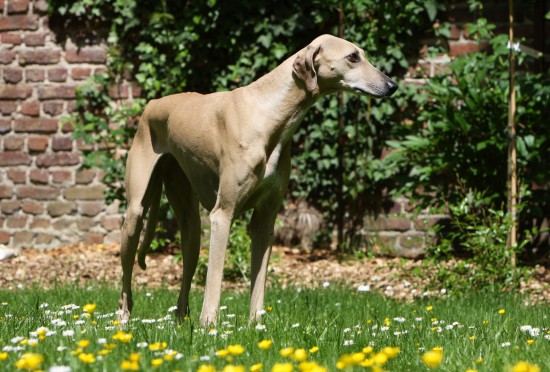 7 Dog Breeds You May Have Never Heard Of
7 Dog Breeds You
7 Dog Breeds You May Have Never Heard Of
7 Dog Breeds You
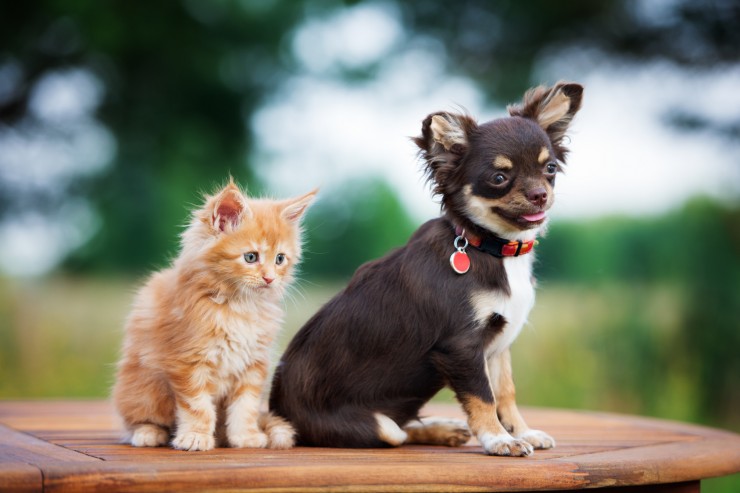 New Year, New Pet?
New Year, New Pet
New Year, New Pet?
New Year, New Pet
Copyright © 2005-2016 Pet Information All Rights Reserved
Contact us: www162date@outlook.com